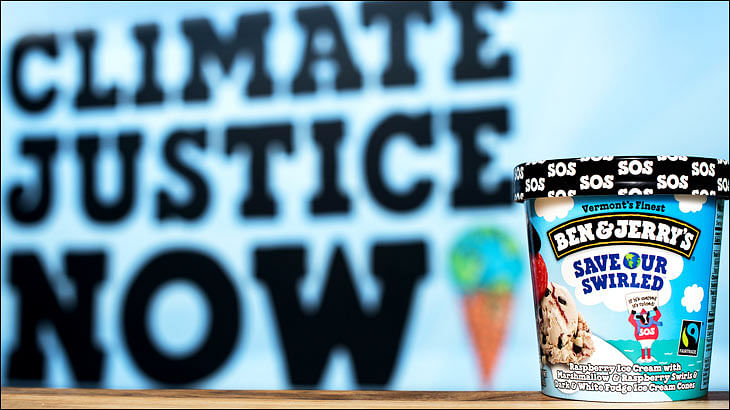/afaqs/media/post_attachments/67c91bf223cb9ddd7b998172609027157910074c6c6c2ddbfd5fbf815dc344e0.jpg)
And what does it have to do with cause marketing?
Today from the laptop you buy to the detergent you use - brand design is about making everything 'woke'. As the design for socially conscious marketing increases, brands are battling FOMO (Fear of Missing Out). Diving deep into social issues, aping other brands' design and marketing strategies are tempting formulas for success. Why reinvent the wheel? Most say.
/afaqs/media/post_attachments/ac5b5675a50c8a79cec9abf05aeb84d95cdec50697bae85f59ac725eaf90d317.jpg)
Shekhar Badve
Brand marketers are quite obviously focusing on how to position their brand across a spectrum of action. And often, unfortunately, this leads to more entropy in brand design.
Take the days following the Supreme Court's verdict on Section 377; soon after the landmark verdict, we saw the social scene explode in rainbows. From food delivery to clothing stores, hospitality companies, alcohol and beverage companies and more, everyone wanted a piece of the rainbow pie. Everyone seemed to rise to the occasion without a thought as to how appropriate this was to what the brand stood for.
Yes, brands are aware of this 'woke' trend. However, when it comes to brand design, how it communicates and what it communicates ties in directly to its relevance. In this sort of brand design, do you really think that your consumer cannot see through your motivations?
ALSO READ: Has the logo design brief changed?
Entropy and the Black Hole
It is normal for brands to have to reinterpret their design in the context of the socio-cultural milieu. But that design has to reflect the brand's purpose. Instead of adopting the herd mentality, take a pause. What are we achieving, other than adding to this entropy? More noise. More chaos.
Why does the approach to brand design have to be influenced by what the competition is doing? In fact, why does it even have to be driven by what the consumer is asking for, at the time? Why does brand design always have to take an outside-in approach? Isn't that what everyone else is doing? And what's more - isn't that a race to the bottom?
Are brand managers not doing a disservice to their brand by making it look and act the same way as another brand? Where then is the uniqueness? To me, there's no doubt. It makes more sense to look inwards to drive a paradigm shift in design. How do you stand apart if you don't stand for anything?
Design to reduce Entropy - Not to add to it
I'm clear that brand design now has to reduce entropy, not add to it. And how can we do that?
• You have to look inwards and identify the core values that define your brand to discover your brand's purpose. Aligning all your strategies and actions seamlessly to the purpose helps you build a strong foundation to build on.
• The design process also has to stop looking outside-in and move towards looking inside-out. You have to remain true to the inherent positive valance of a brand. Building your strategies on that core will inherently make your brand stand out and apart from the chaos. There has to be this conscious effort to distance yourself from entropy, no matter how tempting it might be to do as others are doing.
But where does the customer come in? Well, there's a strong sense that customers naturally align with brands with whom they share common values. This will ensure your audience relates to you at this fundamental level. You then have to identify the fundamental covert needs (and not the overt wants) of your customers/"designees". Only then should you create designs that aim at fulfilling the fundamental needs of your customers by delivering some value to them and their lives.
And what's the role of the clever campaigns, brand messaging, tag lines, and other brand communications? Well, how else would the right audience know who you are and what you represent as a brand?
/afaqs/media/post_attachments/d885d69ea9a689ee73fd26d708d3742fdfeb63a503b715817801b206c818b0a4.jpg)
AirBnB
Click on the image to enlarge
Airbnb, for example, created a stellar campaign called "we accept" just nine days after President Trump ordered the closure of America's borders to refugees temporarily. This campaign was a huge success and one of the most praised ads during the Super Bowl. The campaign drove home the message, embraced by the "right" audience, that Airbnb was welcoming, with no room for discrimination.

Ben & Jerry's
Click on the image to enlarge
Ben & Jerry's 'Save Our World' campaign came before President Trump's controversial withdrawal from the Paris Agreement. Their creative efforts highlighted the severity and significance of climate change. The campaign worked because of its content as well as the fact that the brand remained authentic and true to its purpose. Ben & Jerry's have been known for the social stand ingrained in their DNA. They did not use this opportunity to sell more ice-cream but used ice-cream as an opportunity to shed light on a real social issue. That's a fine example of value-first design.
Notice that I picked two examples for campaigns by brands that were focused on social issues or causes. Does this mean that I suggest brands embrace causes? Well, no.
Clearly, finding a cause in today's current climate is not a challenge, but identifying a cause that is true to and resonates with your purpose while staying authentic, can be, especially when everyone around you seems to be 'doing' so much. The communication design challenge here is to stay true to the Brand Purpose. If a cause resonates with that, then pick it and if a cause doesn't, even if everyone else is talking about it, don't. Brands need to create a purposeful voice not just a loud one -that's just chaos.
(The author is founder-director of Lokus Design, a branding and design agency).
/afaqs/media/agency_attachments/2024-10-10t065829449z-afaqs_640x480.png)
 Follow Us
Follow Us